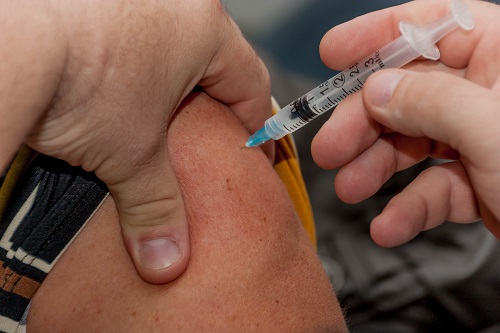Merry Vaxxmas: Promoting Health During the Holiday Season

When the history of the COVID-19 pandemic is written, one of the key elements of the narrative will be the speed at which vaccines were developed. If you remember the first few months of the pandemic, many experts were saying that it would be at least a decade before a reliable inoculation was developed, tested, and deployed — and that we could be looking at years of catastrophic death tolls and disruptive lockdowns. Less than eight months later, there were no fewer than five vaccines available to the public; and by mid 2021, virtually anyone in North America over the age of 18 could easily get a vaccine. This was not only a triumph of biomedical research, but also a major victory for public health organizations who were at the front lines of making these life-saving therapies available to hundreds of millions of Americans.
This winter, we are experiencing the “perfect storm” of vaccines, and demand for inoculations has never been higher. Not only are tens of millions of people receiving their third-dose boosters of the COVID vaccines, but children under the age of 12 are able to receive their first shots. In addition, this is the time of year when millions of Americans receive their regular flu vaccines. It’s not an exaggeration to say that during this winter season, half a billion doses could be given in the United States for these vaccine preventable diseases.
The timing couldn’t be better. Travel over the recent Thanksgiving holiday was significantly higher than it was in 2020, and travel for Christmas and New Year’s is rapidly approaching. The massive number of vaccinations that are currently being given out will make travel, not to mention family time, far safer than it was even a few months ago.
That’s great news on the medical front, and it is certainly a positive sign for public health in this country. But it is also a logistical nightmare for the state and local health departments that have to coordinate this unprecedented number of inoculations in such a short time span. Simply put, health departments were never designed to handle the sheer number of vaccinations that we are currently seeing. Not only do they have to administer the inoculations, but they also have to track them and keep individual medical data safe and secure. Mix in the fact that in many areas there are multiple agencies and organizations administering vaccinations, and the scope of the data problem becomes even more glaring.
This is the classic “too much of a good thing” conundrum. Throughout 2020, health departments despaired that they might not have vaccines available for many years; but right now, many of them are overwhelmed by the need to provide booster shots to adults, first and second shots for kids, and regular annual flu vaccines (not to mention the shingles inoculation!). And everything needs to be properly managed and fully HIPAA compliant.
An important key to managing all of this is to minimize data chaos. That means ensuring that disparate systems seamlessly connect with each other and can share public health data between them. It means tracking who is vaccinated, and who is not, without compromising medical privacy. Utilizing an Immunization Information System can help facilitate coordination between school systems, hospitals, public health agencies, pharmacies, clinics, and other institutions that provide care.
A few months ago, people were openly talking about the end of the pandemic, but the emergence of the omicron COVID variant is showing us that we are not out of the woods yet. Health departments need to remain vigilant and prepared to respond to whatever curveballs come at us this holiday season and into 2022. But no matter what the situation is, public health data management associated with the pandemic and other health conditions will need to be front and center as they plan their immunization strategies. And it all starts with making sure that disparate systems for collecting and managing data can connect seamlessly with each other to allow healthcare experts to make the real-time decisions that will protect their communities and save lives.